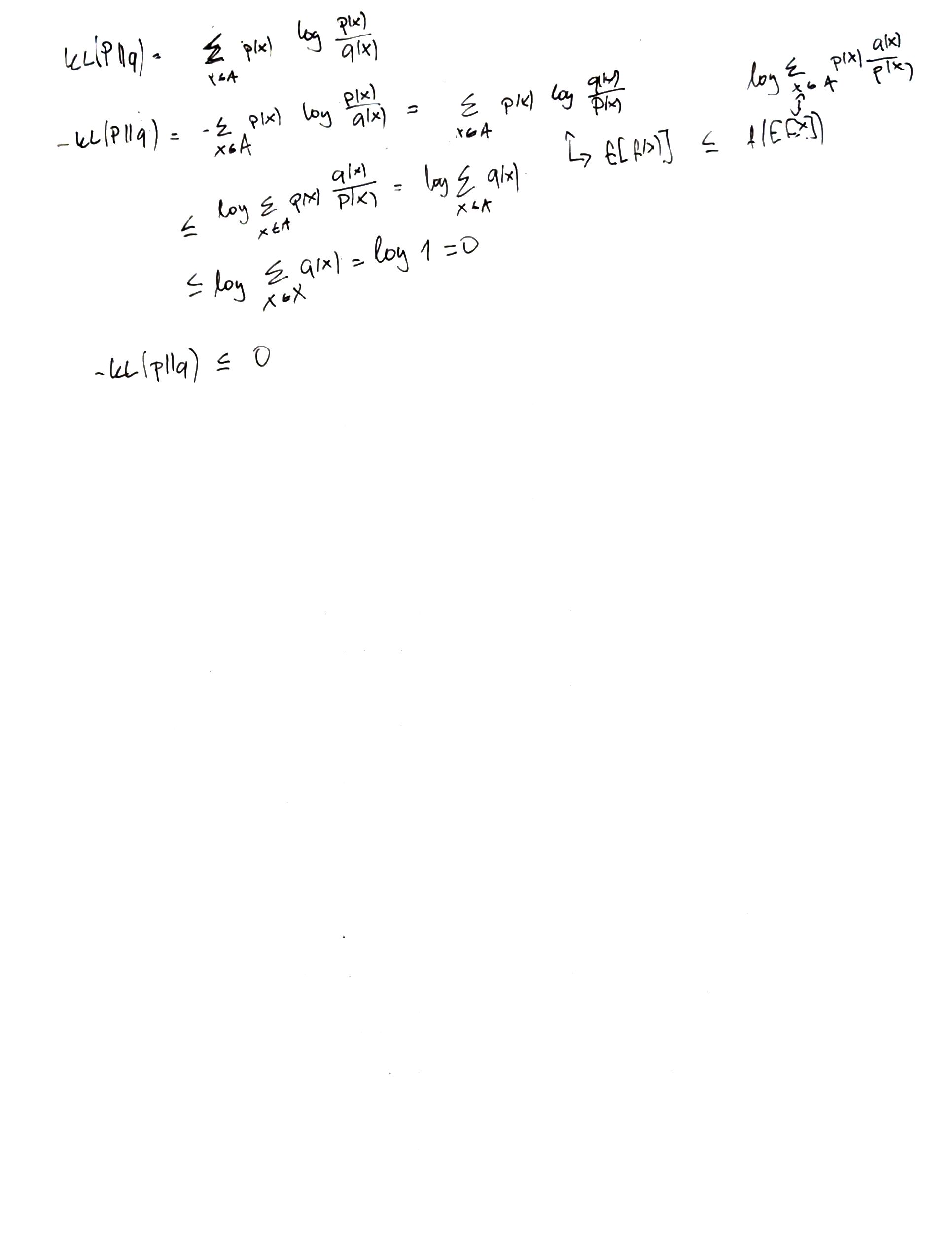Kullback-Lieber divergence (KL)¶
Also known as Relative entropy.
We can view it as a measure of dissimilarity of two probability distributions \(p\) and \(q\).
Where we can replace the sum for an integral from PDFs.
We can expand this into: $\( KL(p||q) \triangleq \sum_k p_k \log p_k - \sum_k p_k \log q_k = -H(p) + H(p,q)\)$
Where:
\(H(p,q)\) is the cross entropy \(H(p,q) \triangleq -\sum_k p_k \log q_k\).
Here cross entropy is the average number of bits needed to encode data coming from a source with distribution p where we use model q to define our code-book.
From this we can express KL divergence as the average number of extra bits needed to encode the data, due to the fact that we use distribution q to encode the data instead of the true distribution p.
Properties¶
Cannot be negative.
Zero only if \(p=q\)
and 2. form the information inequality or Gibbs inequality.

